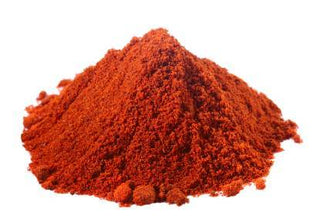(Capiscum annuum)
Paprika is a member of Capsicums, flowering plants that bear seeded fruits in the form of sweet and hot peppers. The fruit of Capsicum plants are commonly derived from chili peppers. All capsicum peppers are from the same family as tomatoes, potatoes and deadly nightshade.
Paprika is a finely ground powder from peppers that are larger and milder than chili peppers, explaining its milder flavor than red pepper. Paprika can vary in flavor from mild to fairly spicy depending on the peppers used. The hottest paprikas are not deep red but more brown to yellow in color.
Paprika is often dusted on foods to add color and is used as a natural colorant in many processed foods.
Health Benefits
The active compound in paprika, capsicum, is associated with anti-inflammatory properties. In topical products, capsicum exerts works as an analgesic to relive pain.
Nutritional Value
Paprika is an excellent source of vitamin A, providing 3,560 IUs per tablespoon, primarily as beta carotene, but also as lutein, zeaxanthin and beta cryptoxanthin. This spice is also a good source of vitamin B6, vitamin E, vitamin K, riboflavin, and niacin and the minerals iron and potassium.
Recipe Ideas
While high heat destroys the flavor of paprika, moderate heat is fine. Paprika added near the final cooking phase, will impart a deep, sweet, earthy taste to meats and vegetables.
Interesting Facts
Paprika derives its name from Hungary, where it is used to flavor their popular dish, goulash. The spice is synonymous with Spanish cuisine.

